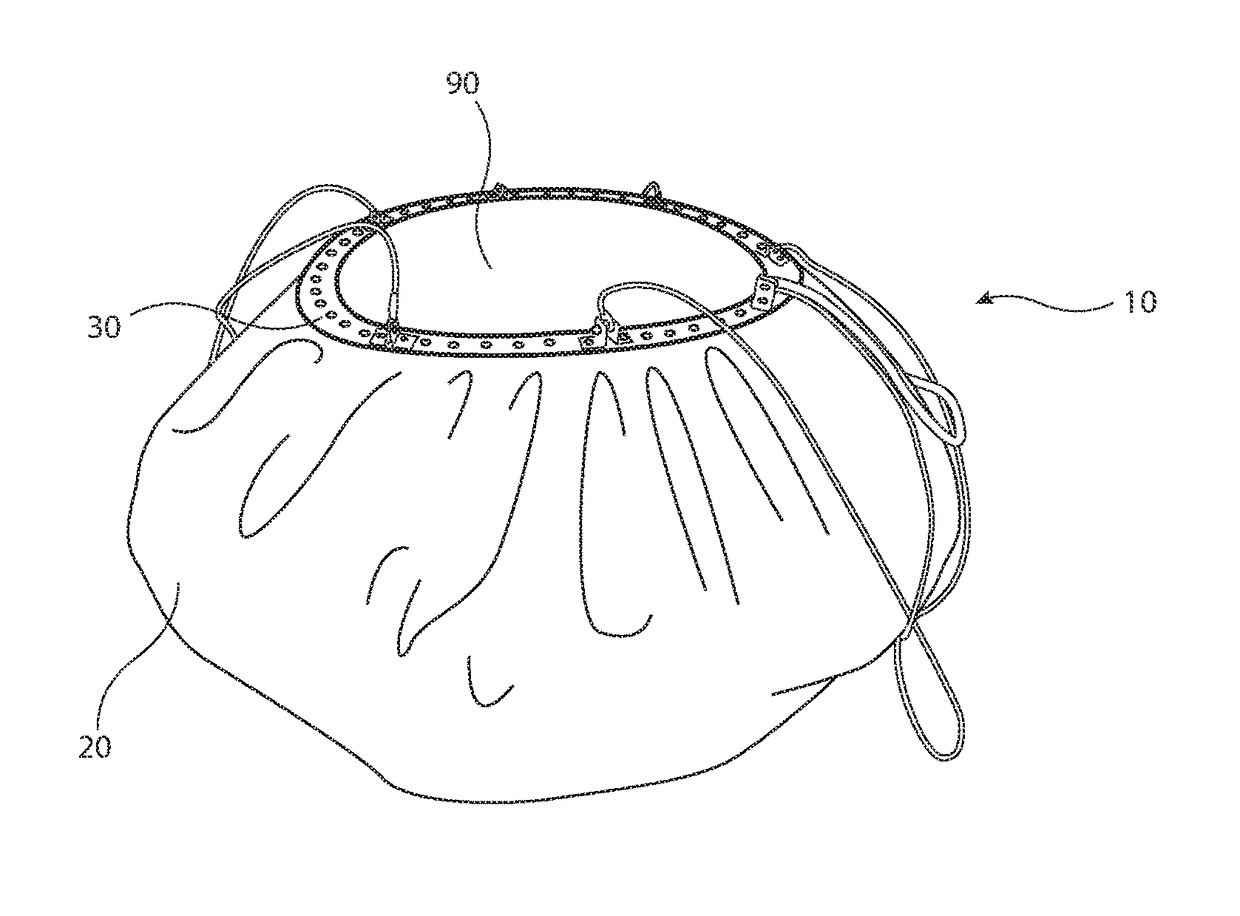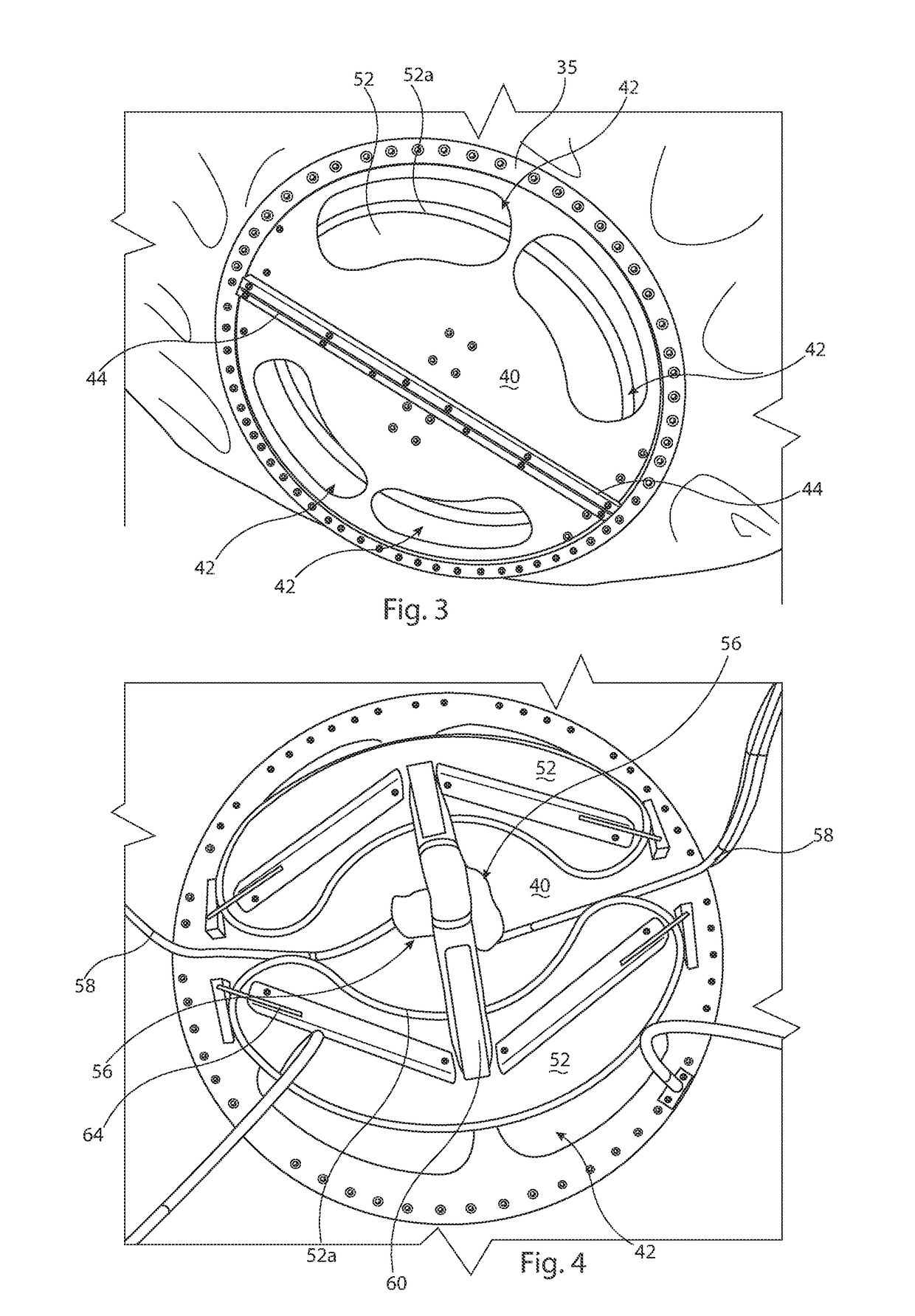Aerial fire-fighting bucket
a fire-fighting bucket and bucket body technology, applied in fire rescue, valve details, engine components, etc., can solve the problems of wasting wasting time, and wasting time, so as to facilitate the hose handling wear and tear, reduce the amount of time, and save the effect of saving fuel and other running costs which can be extremely expensiv
- Summary
- Abstract
- Description
- Claims
- Application Information
AI Technical Summary
Benefits of technology
Problems solved by technology
Method used
Image
Examples
Embodiment Construction
[0050]A fire-fighting bucket 10 in accordance with an embodiment of the invention will now be described. Bucket 10 as illustrated in FIGS. 1 to 10 is shown empty, that is, without any fire retardant (e.g. water) contained therein. It will be appreciated that the Figures also show the bucket 10 as it would appear generally resting on the ground and not as suspended from an aircraft (e.g. a helicopter) as would be the case during use thereof. Some of the Figures show the bucket 10 as it would appear at least partially suspended. During use of the bucket 10, rigging lines would be connected to the bucket 10 to enable the bucket 10 to be suspended from the helicopter. The shape of the bucket 10 as shown in FIGS. 1 to 10 is not reflective of the shape that would be achieved when the bucket 10 is filled with a fire retardant. The filled shape is more closely represented by FIG. 11.
[0051]To simplify the following discussion, the fire-fighting bucket 10 will hereafter be described in connec...
PUM
 Login to View More
Login to View More Abstract
Description
Claims
Application Information
 Login to View More
Login to View More - R&D
- Intellectual Property
- Life Sciences
- Materials
- Tech Scout
- Unparalleled Data Quality
- Higher Quality Content
- 60% Fewer Hallucinations
Browse by: Latest US Patents, China's latest patents, Technical Efficacy Thesaurus, Application Domain, Technology Topic, Popular Technical Reports.
© 2025 PatSnap. All rights reserved.Legal|Privacy policy|Modern Slavery Act Transparency Statement|Sitemap|About US| Contact US: help@patsnap.com



